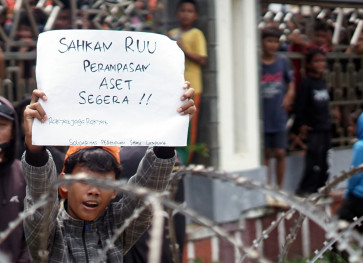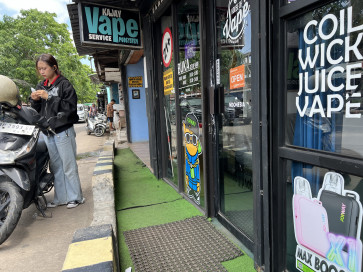Popular Reads
Top Results
Can't find what you're looking for?
View all search resultsPopular Reads
Top Results
Can't find what you're looking for?
View all search resultsNew approach to water management called for
The city administration should protect water from commodification in an effort to secure citizens’ access to clean water as a human basic need, experts say
Change text size
Gift Premium Articles
to Anyone
T
he city administration should protect water from commodification in an effort to secure citizens’ access to clean water as a human basic need, experts say.
Nila Ardhianie, the director of the Amrta Institute for Water Literacy, and Riant Nugroho from the city’s water regulatory body said the city’s decision to hand over water management to private firms more than ten years ago was a mistake.
Nila said the administration’s decision to hand water management to two foreign companies in 1998 heralded the commodification of water.
“Water management should be a semi-public system because it’s a basic human need,” Nila said.
The city is tied into a 25-year contract with private water operators PT Aetra Air Jakarta, which serves the city’s eastern parts, and PT PAM Lyonnaise (Palyja), which serves the western parts.
Problems of lack of access to clean water in some areas keep surfacing, as do complaints from residents in North Jakarta who don’t have 24-hour access to piped water.
According to city-owned water company PAM Jaya’s latest report, the total number of piped water customers was 795,149, a 70 percent increase from the 468,070 customers in 1998, when water management was handed to Palyja and Aetra.
Riant said, however, that returning the responsibility for water management to the city was not a good option because of the possibility of political agendas affecting service.
“The city has to look for a third option, a public partnership,” he said Riant said that if PAM Jaya worked with their customers in managing piped water by going public, the company would be run professionally because they would have to answer to the public. Under the present structure, the two operators shoulder the cost of infrastructure, which is later passed on to customers through higher tariffs, he said.
Currently, the city and the two companies use a water charge and a water tariff system because investors wanted a risk-free investment.
Nila and Riant agreed that the double financing scheme created problems in the effort to provide clean water for low-income families. The water charge is the price PAM Jaya pays operators to supply water to households. The water tariff is the charge levied to customers.
Riant said problems began when the water charge was higher than the water tariff, which used a cross-subsidy system. The gap, he said, would force PAM Jaya to be in debt to the private operators.
“Under this system, an increase in services for the poor will increase the city’s burden,” he said.
The water charge, he said, increased regularly because it was based on macro-financial factors such as inflation, not the performance of the operators.
Palyja spokeswoman Meyritha Maryanie denied that her company was too profit-oriented, saying after 12 years of investing in the country, the company had not broken even on its total capital investment.
“In 1998, there were only 9,500 low income customers [who pay Rp 1,050 per cubic meter of water]. Now we have over 82,000 customers, an increase of almost 800 percent,” she said.










